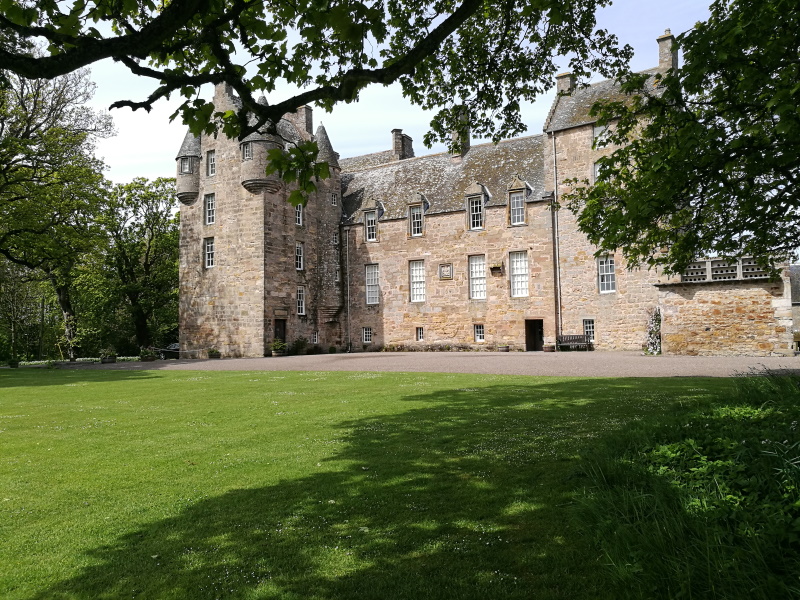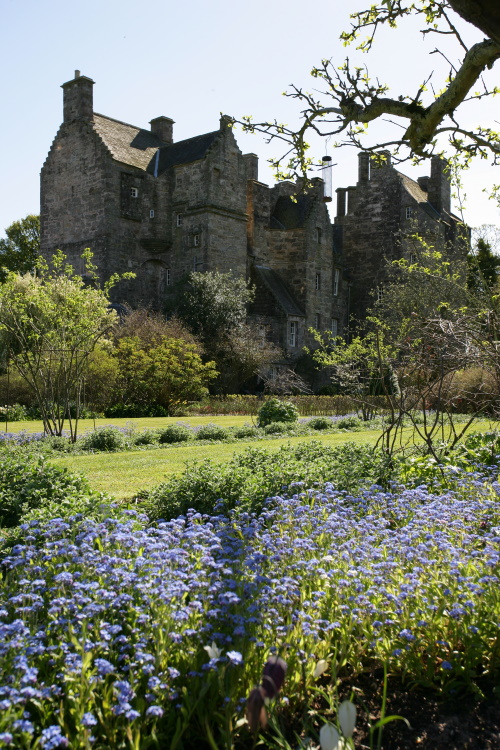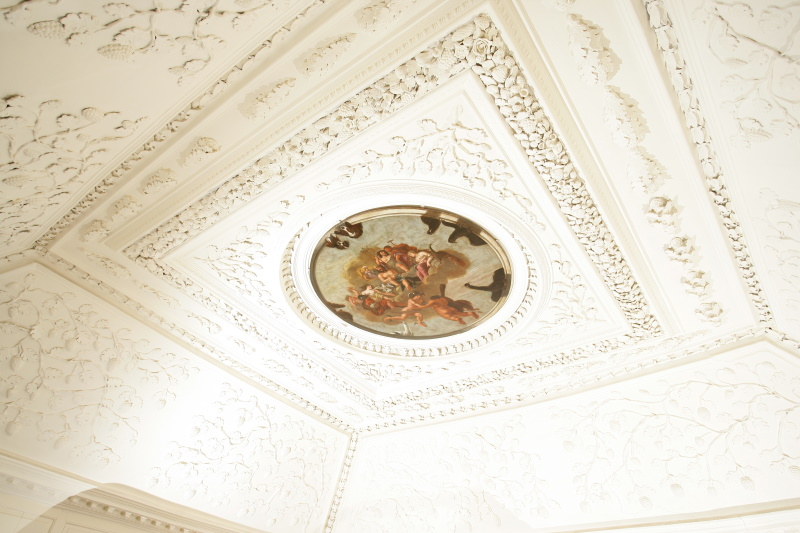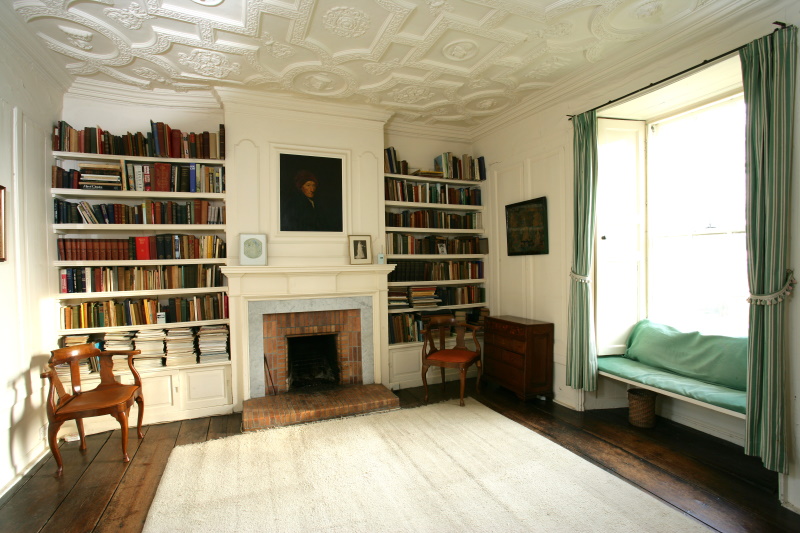SPAB member William Napier shares his love of this medieval castle, which was saved in the 19th century by the Lorimers, an artistic family, who gave the building an impressive Arts & Crafts interior and garden.
“This mansion snatched from rooks and owls is dedicated to honest ease amongst labours 1878”. Kellie Castle, located in the East Neuk of Fife, is a remarkable survivor and a fine example of early sensitive intervention which saved this beautiful property from ruin.
South elevation of the caslte. Credit: Will Napier.
Kellie comprises three towers, linked by a central range, built between the 15th and early 17th centuries by the Oliphant family and Thomas Erskine, Viscount Fenton, later 1st Earl of Kellie. Its survival owes much to improvements started but never completed, allowing each layer to remain relatively untouched. Finely carved Oliphant crests survive on dormer heads, carried out as part of a major re-casting of 1606, alongside lozenge shaped chimneys and the highly compartmentalised plasterwork library ceiling completed in 1617.
After this time Kellie avoided any major improvements other than decorative plasterwork additions in the late 17th century and relatively minor 18th century improvements. After the death of the 7th Earl of Kellie in 1797, the earldom eventually passed to the Earls of Mar in 1835, by which time Kellie Castle’s status was much diminished. For the next half century, it served as accommodation for a colliery manager and barn for a neighbouring farm.
© National Trust for Scotland, Kellie Castle.
The decline was halted in November 1878 when James Lorimer, Professor of Public and International Law at Edinburgh University, agreed the terms of an improving lease with the Earl of Mar and Kellie, to use Kellie as a summer residence.
Lorimer employed local architect, John Currie, to oversee the minimal repairs now recognised as being a significant early example of good conservation practice.
Kellie Castle greatly influenced Professor Lorimer’s son, architect Sir Robert Lorimer, whose own plasterwork designs executed at Hill of Tarvit, Ardkinglass and Rowallan resemble the 1676 work carried out in the Vine Room.
The ceiling of the Vine Room © National Trust for Scotland, Kellie Castle.
Lorimer’s architectural drawings for Kellie are still relied upon to inform Kellie’s ongoing maintenance by its current owners, the National Trust for Scotland. The Trust acquired Kellie from sculptor Hew Lorimer and his wife Mary in 1970.
The interiors of Kellie are curated much as Hew and Mary left them, with personal items of furniture and aged electrical storage heaters juxtaposed alongside the 17th-century plasterwork and 18th-century panelling.
Library that was a bedroom and used by Professor James Lorimer as a study and by Mary and Hew as a winter sitting room © National Trust for Scotland, Kellie Castle
Hew’s sculpture workshop and his father’s artist studio are preserved and so too the garden which the family created. The Trust did however, uncover and restore Phoebe Anna Traquair’s mural based upon Botticelli's "primavera" above the Drawing Room fireplace, completed in 1897, which Hew and Mary had covered over when in the late 1940s.
The Trust also manage the remnants of the Kellie estate which once supported this great house which is perfectly aligned to the Bass Rock which sits in the Firth of Forth. I first visited Kellie soon after being appointed NTS surveyor for the property, it was surrounded by wildflower meadows. As a plasterer by training, my initial excitement was working with the plaster decoration. However, the property’s survival when other castles were lost, ruined, or subsumed within later schemes is what I love most. Visiting Kellie never felt like work, it was and still is my favourite place.
William Napier is a chartered building surveyor, plasterer, architectural historian. This article first appeared in the autumn 2019 edition of the SPAB Magazine, a benefit of membership. To find out more about the castle, visit the National Trust for Scotland's website.
Do you have a favourite building you would like to tell us about? Email press@spab.org.uk




